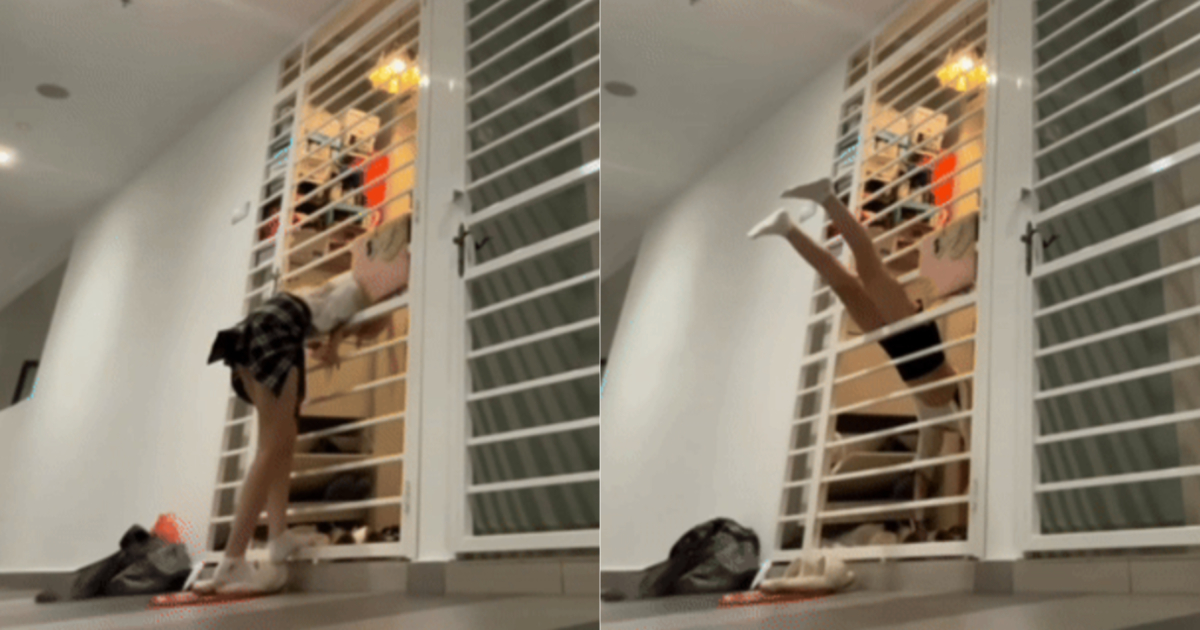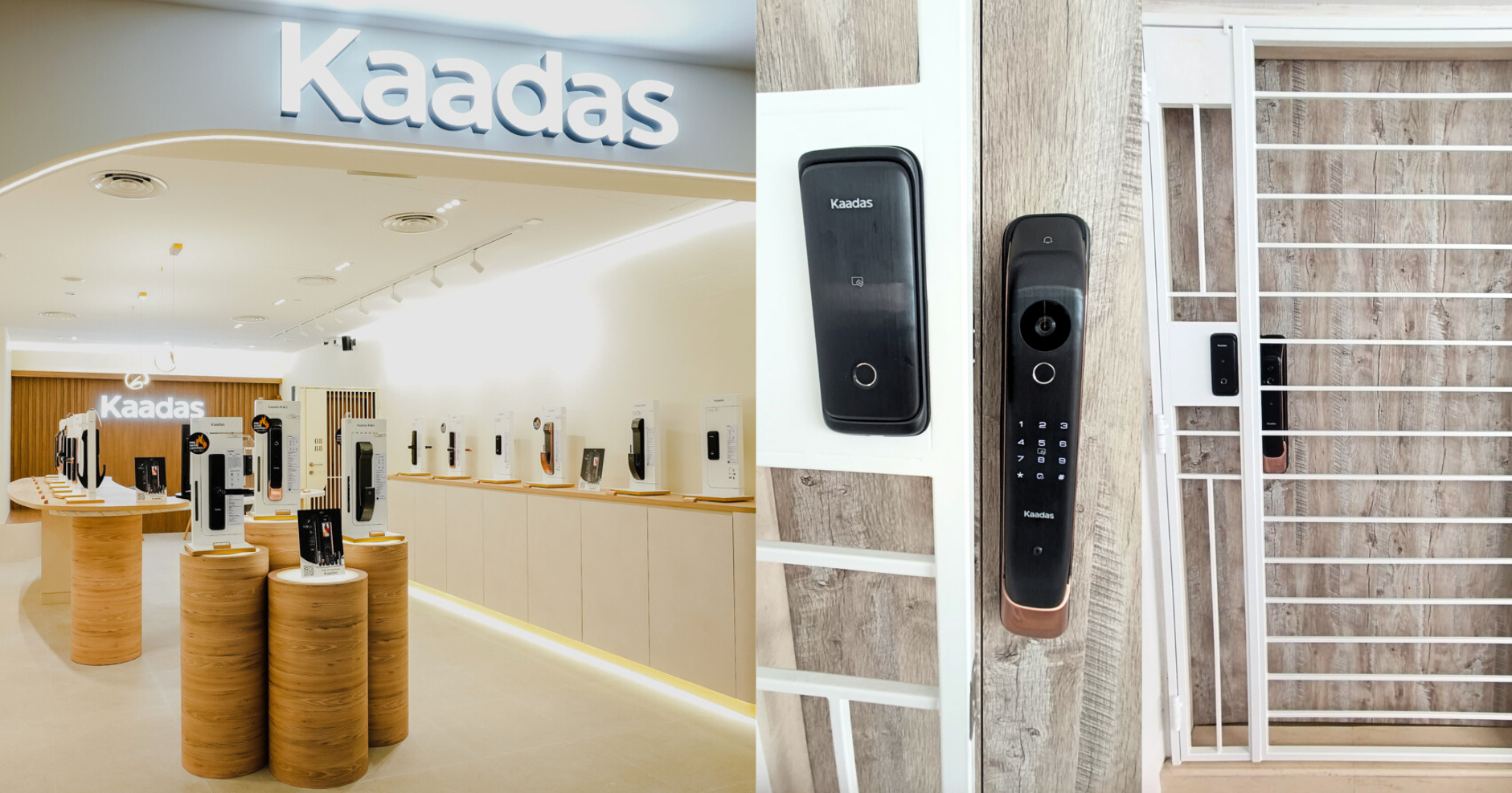1st record of rare peregrine falcons nesting in S'pore captured at OCBC Centre
No falcon babies for now, but hopefully there will be in the near future.
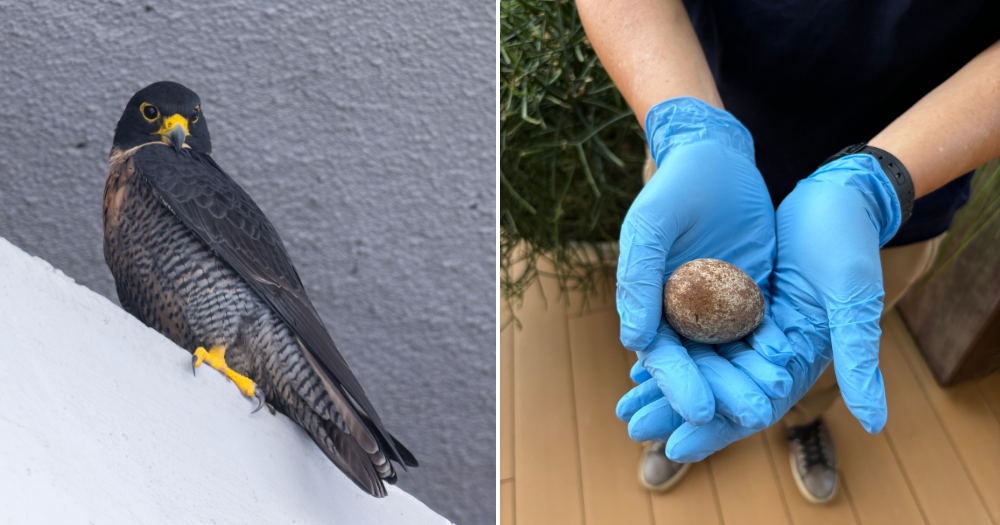
The peregrine falcon, the bird with the fastest diving speed in the world, and also a rare visitor to Singapore, has been recorded nesting here for the first time.
This is significant, as little is known about the breeding habits of this species in tropical areas.
This also makes for the first breeding pair of peregrine falcons here, which means that the species might be Singapore's rarest breeding bird.
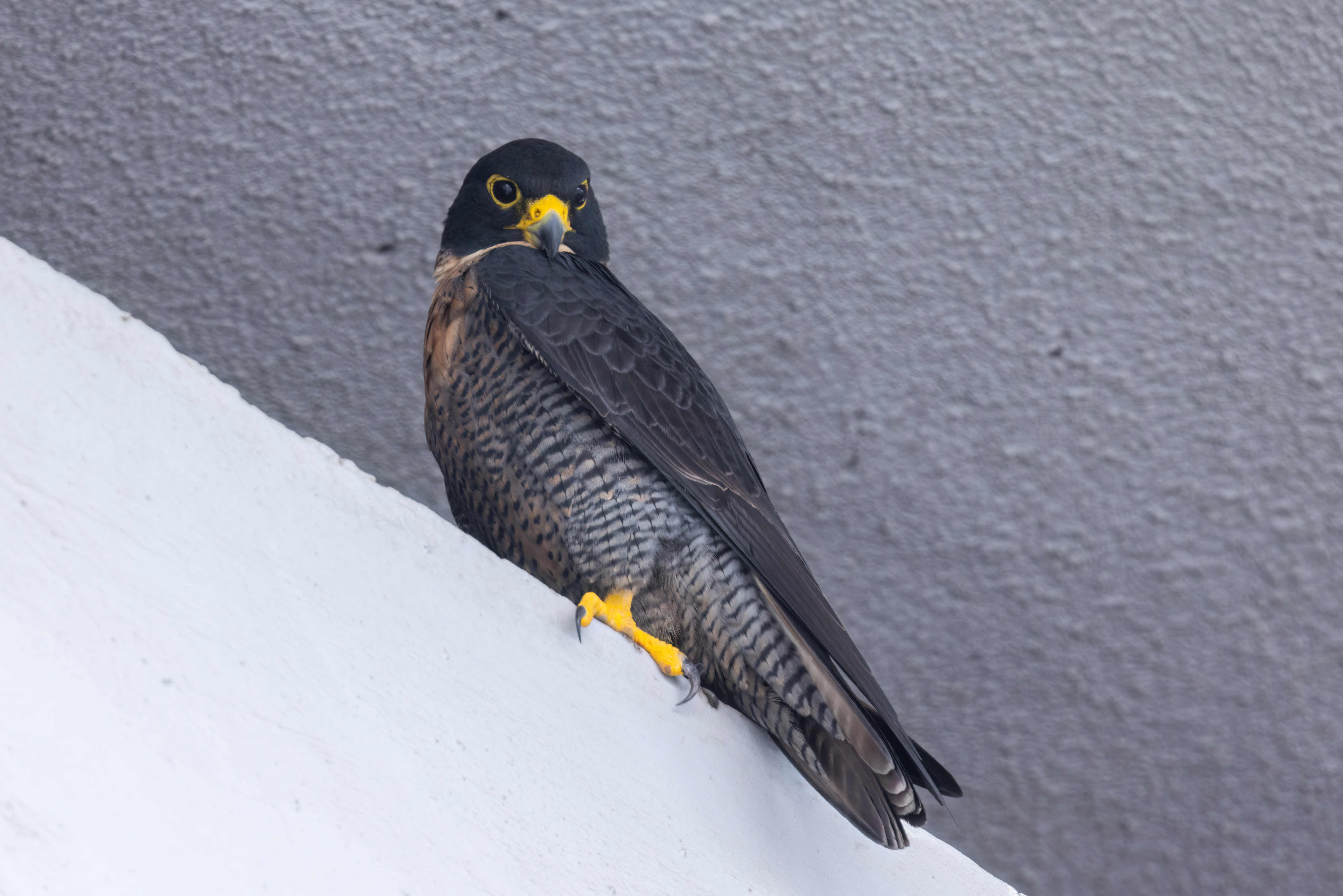 Photo from Max Khoo, NParks
Photo from Max Khoo, NParks
Falcons spotted mating
In a biodiversity record published in scientific journal Nature in Singapore on Aug. 30, a falcon was spotted flying around the SingTel building along Pickering Street on Jan. 30 earlier this year.
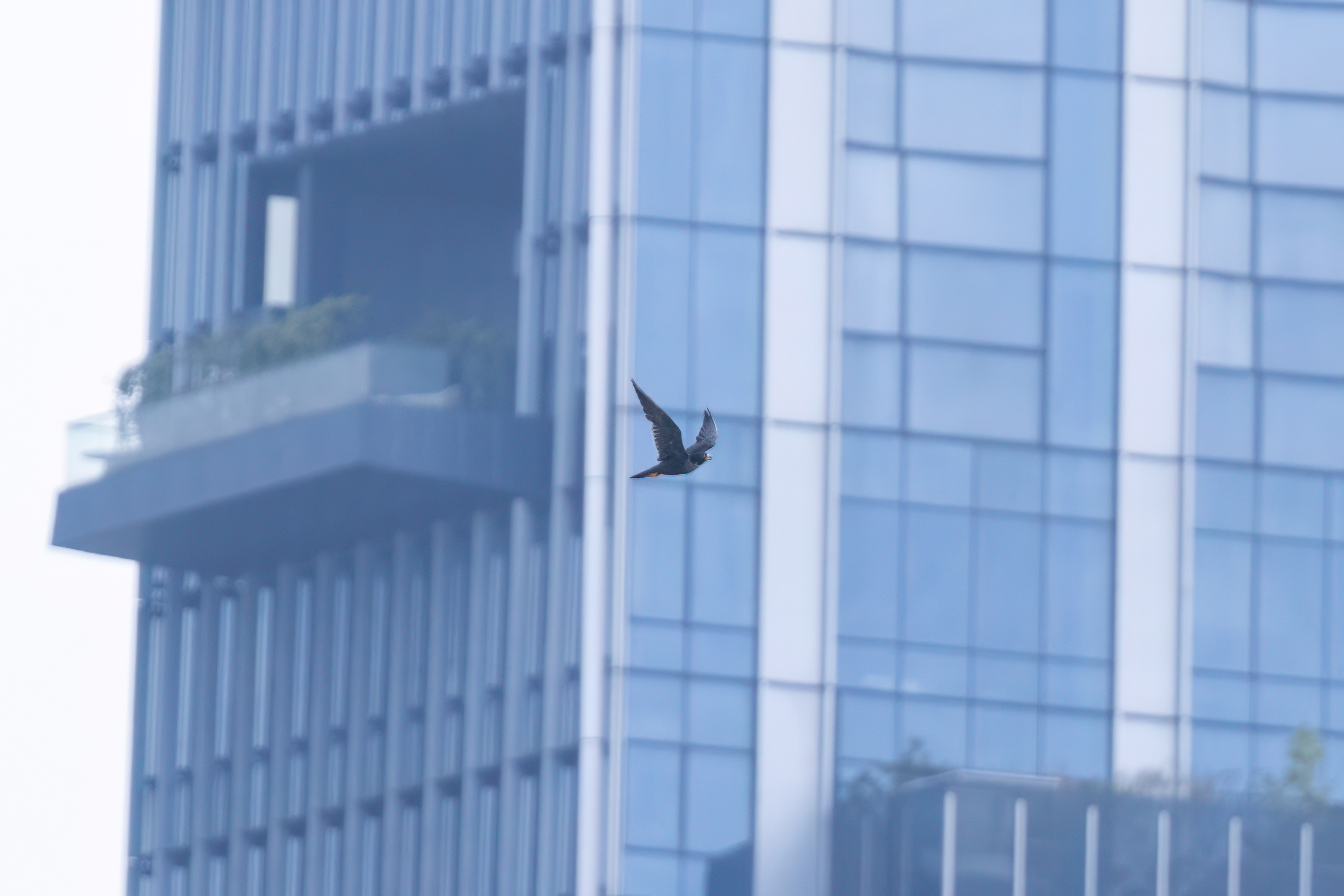 Photo from Max Khoo, NParks
Photo from Max Khoo, NParks
A day later, a pair of falcons were seen copulating on the One George Street building, and the female then entered a recess 37 floors up on the exterior of the OCBC Centre building later that night.
The pair was observed copulating a second time on Feb. 1, and the female then disappeared into the recess.
To monitor the falcons' activity, remote cameras were placed on the balcony below the recess, and a telescopic tripod with a camera was raised to the recess to determine the breeding status of the pair.
Although two eggs were seen sitting on the bare concrete on Apr. 23, the adult falcons were not seen incubating the eggs or flying to the nest.
Several months later, the eggs were still there, with no parents attending to them.
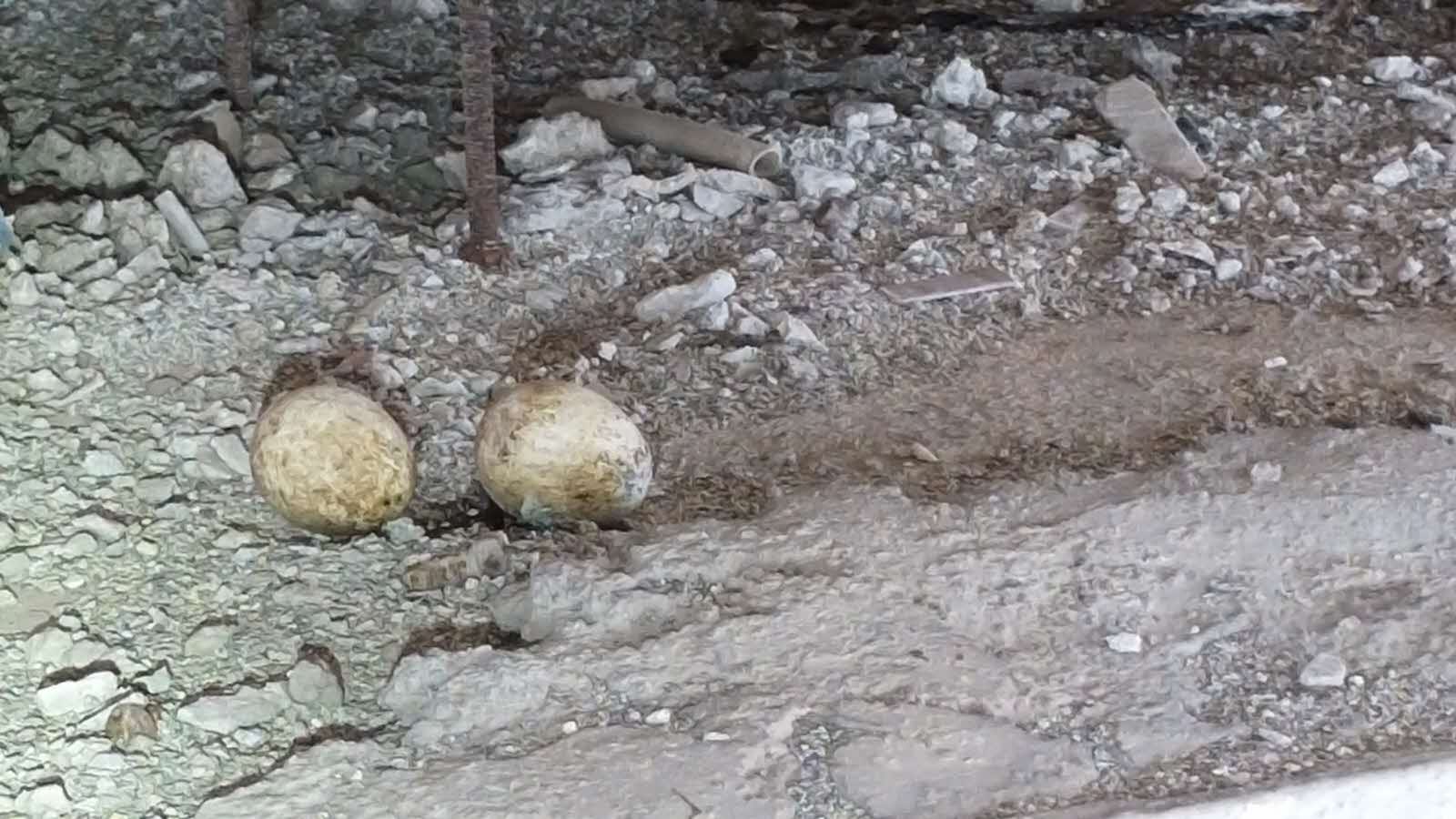 Photo from SUTD
Photo from SUTD
Unsuitable nesting substrate
Although this was the first time that peregrine falcons were seen nesting in Singapore, the breeding unfortunately turned out to be unsuccessful, as the eggs were abandoned.
The biodiversity record, which was submitted by National Parks Board (NParks) researchers including Malcolm Soh and Max Khoo from the Wildlife Management Research team, stated that the eggs could have been abandoned due to unsuitable nesting substrate.
Peregrine falcons typically nest on loose gravel where they can hollow out a space for the eggs, or occasionally, abandoned nests from other birds.
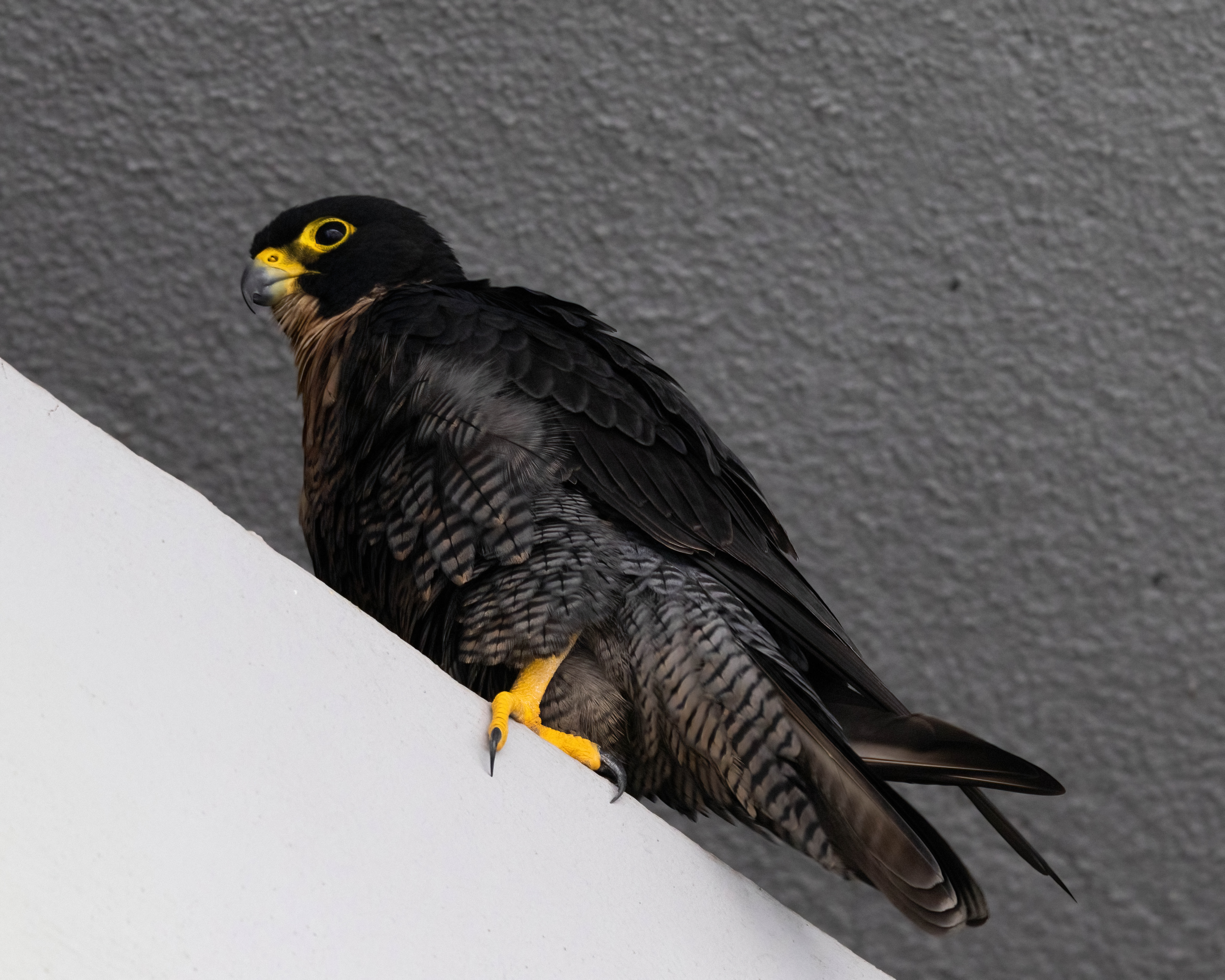 Photo from Malcolm Soh, NParks
Photo from Malcolm Soh, NParks
"It is therefore likely that the absence of suitable substrate in the recess may have impeded nesting success," Soh said in a statement to Mothership.
Inspired by claw machines
The eggs were retrieved with the help of a team of robotics researchers from the Singapore University of Technology and Design (SUTD), using a device called the Egg Retrieval and Nesting Enhancement Support Tool (ERNEST).
Associate Professor Foong Shaohui, who led the SUTD team, told Mothership that the name ERNEST is a play on the peregrine falcon's species name, Falco peregrinus ernesti.
"And the name includes the word 'nest'," he quipped.
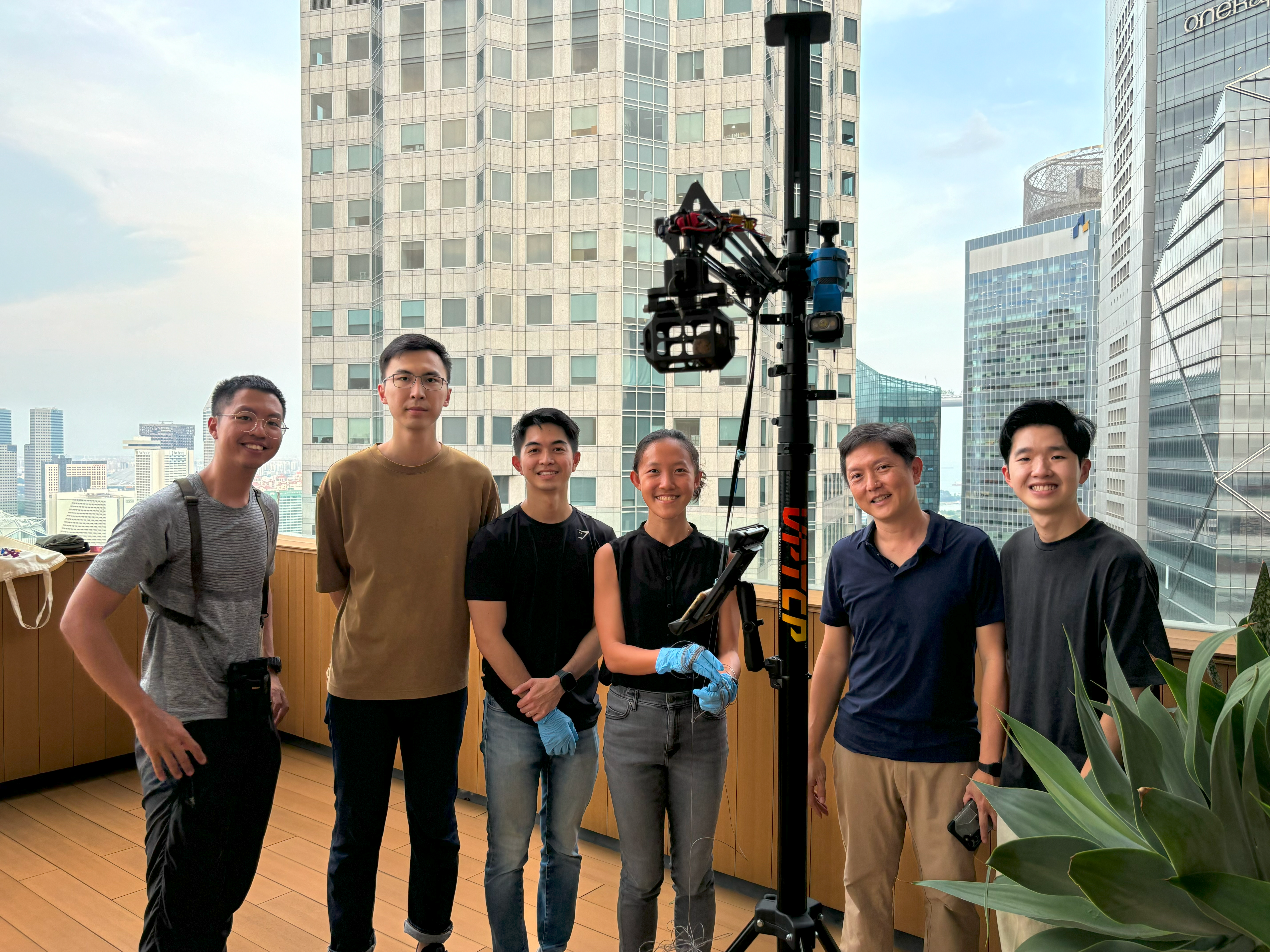 NParks and SUTD researchers. Photo from NParks
NParks and SUTD researchers. Photo from NParks
The SUTD team initially considered deploying one of their existing devices, a drone which had a grabber attached to it.
However, when the team surveyed the balcony area, they said it was too small to deploy a drone and conditions were too windy so high up.
Additionally, a permit would need to be acquired to fly the drone.
Inspired by claw machines at the arcade and cranes used to pick up containers at ports, the team combined the drone's grabber with a 10m telescopic pole, which can reach the eggs in the recess.
ERNEST was thus born after a month of development.
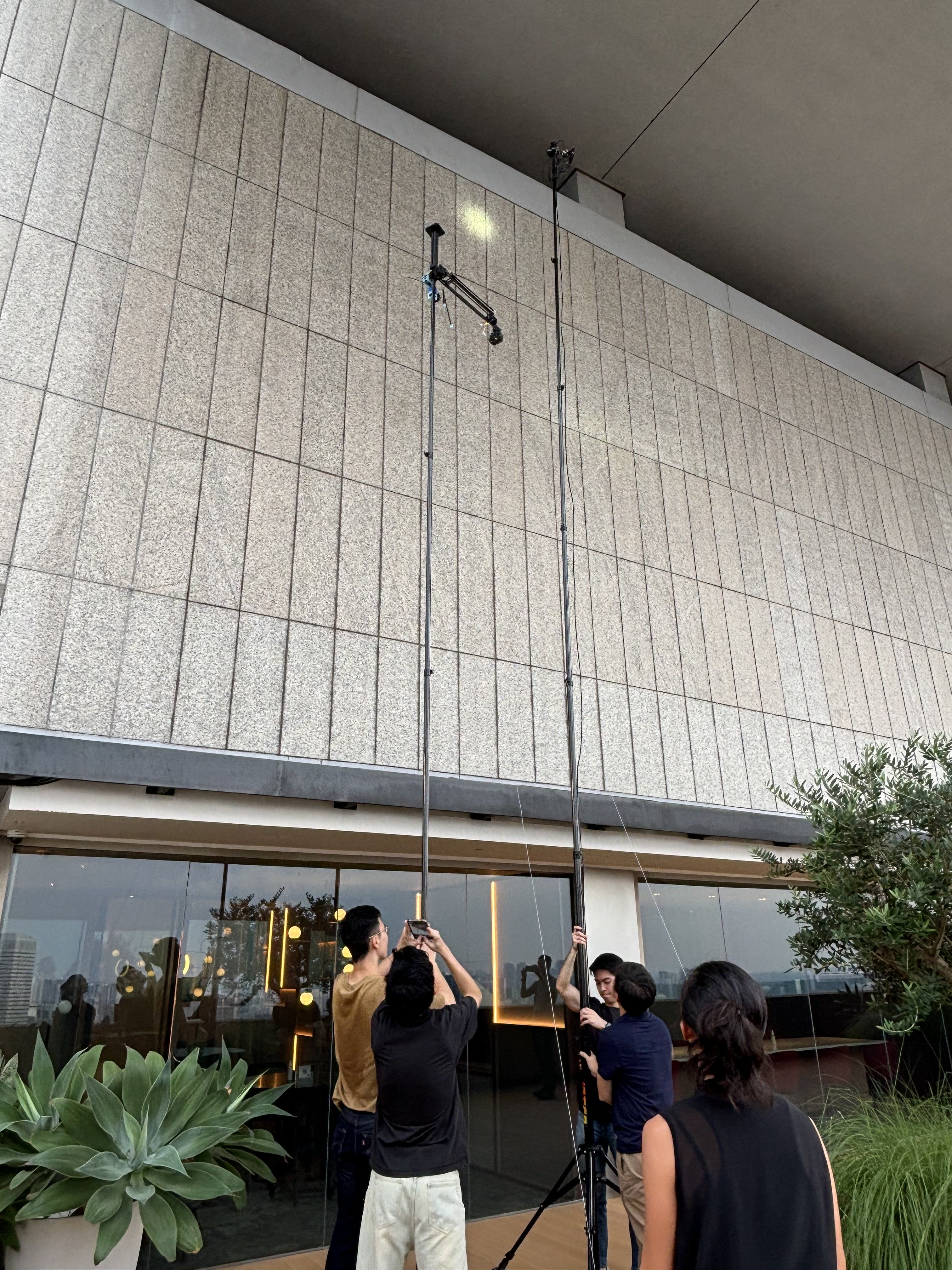 Photo from NParks
Photo from NParks
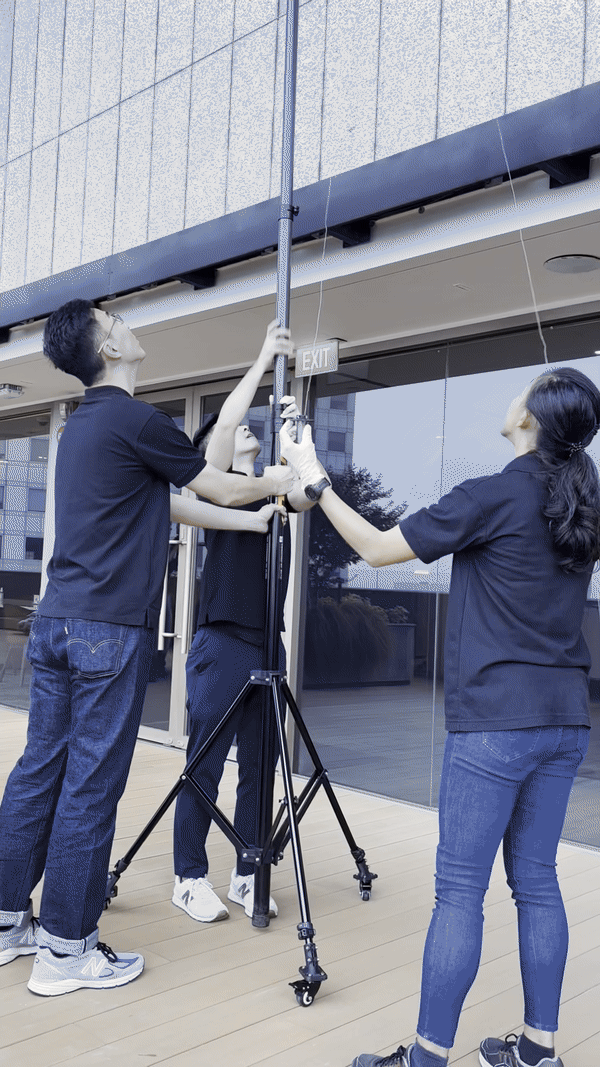 Video by Ashley Tan
Video by Ashley Tan
The extension of the grabber can be controlled by cables on the ground, and the opening and closing of the grabber, by a remote.
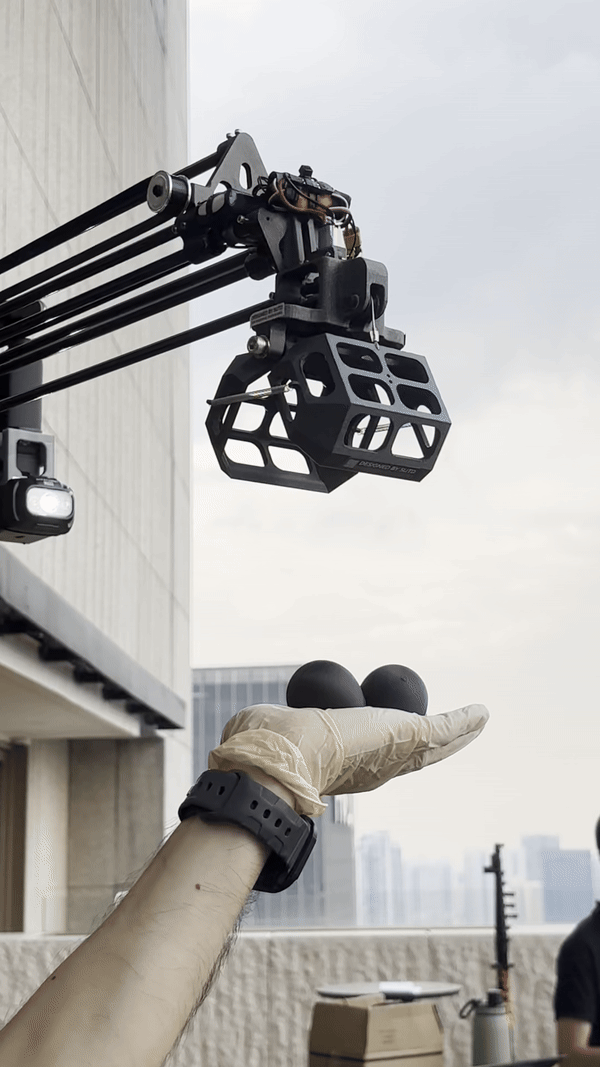 A demonstration of the grabber with some replica eggs. Video by Ashley Tan
A demonstration of the grabber with some replica eggs. Video by Ashley Tan
Retrieving the eggs was a finicky process.
However, it only took around an hour — much faster, safer and efficient than the alternative option of setting up a scaffold for someone to climb up and grab the eggs themselves, Foong said.
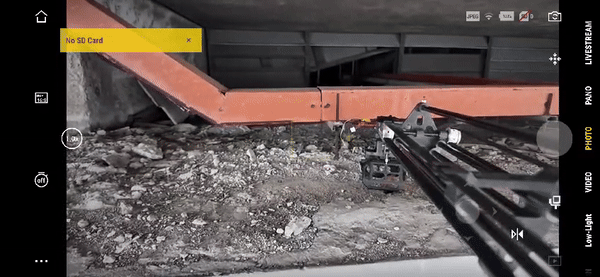 Video from SUTD
Video from SUTD
And success.
 Photo from NParks
Photo from NParks
Eggs were badly decomposed
The eggs were sent to Lee Kong Chian Natural History Museum (LKCNHM), Faculty of Science, National University of Singapore, where they were examined by Tan Yen Yi, assistant senior curator of birds.
 Photo from NParks
Photo from NParks
Although both eggs were mostly similar in size, one egg was noticeably heavier and almost twice the weight of the other, Soh said.
The lighter egg had a small crack and a strong sulphurous smell, which meant that it had decomposed.
Soh shared that the decomposition was likely due to a "bacterial invasion through its compromised shell".
The heavier egg meanwhile, was intact and preliminary candling revealed a viable but likely non-fertile egg. Its contents were also decomposed, but to a lesser extent than the lighter one.
These observations suggest that the eggs may have been abandoned "due to shell damage", Soh said.
Helping to improve the falcons' nesting success
Peregrine falcons have been observed around the Central Business District area since 2017, and pairs have been observed copulating in the area in December 2022 and January 2023.
This shows that the species has adapted well to urban environments here.
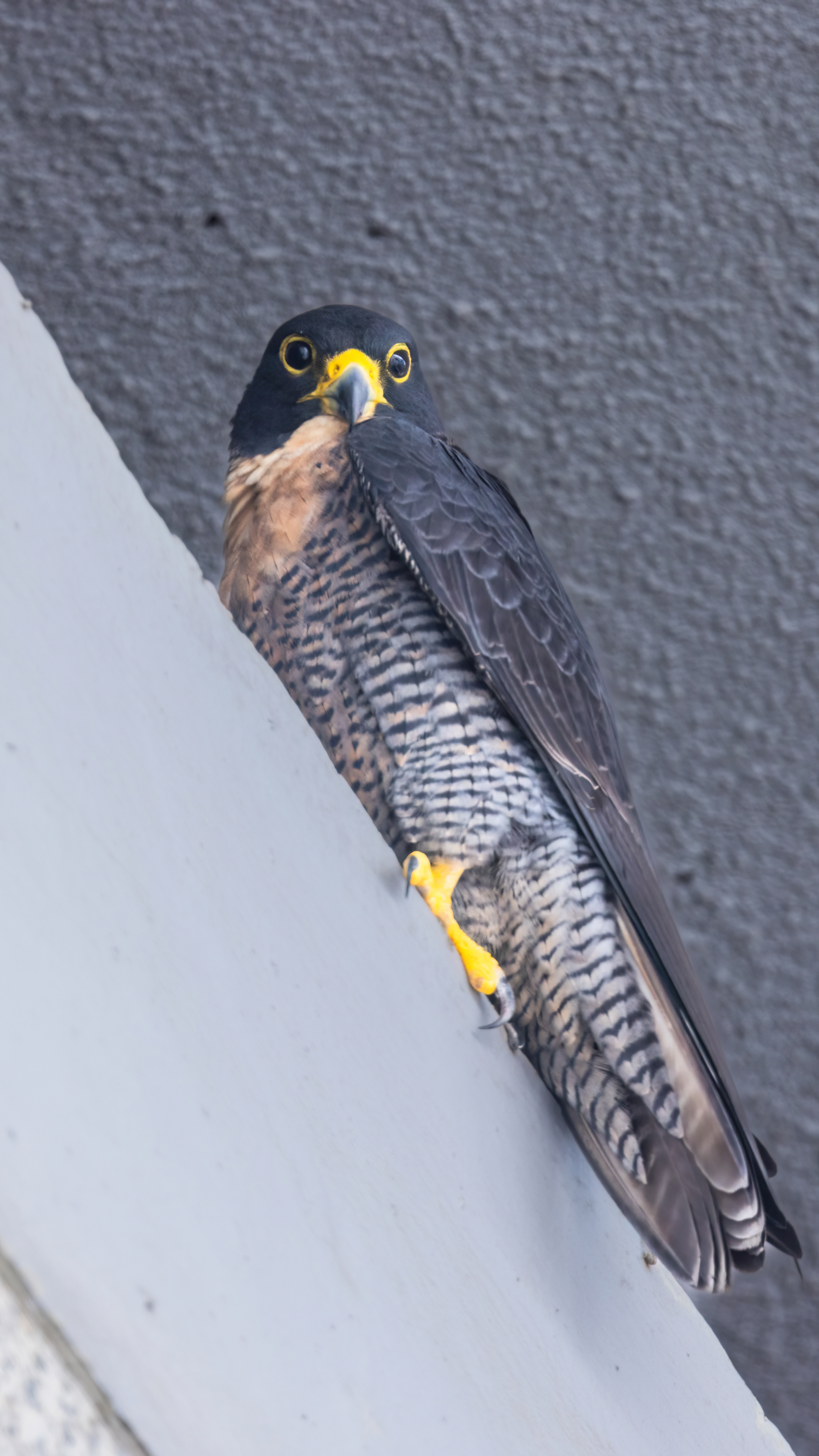 Photo from Max Khoo, NParks
Photo from Max Khoo, NParks
Evidence of the falcons' presence was observed at OCBC Centre — these were the remains of a pigeon meal on the balcony ledge below the recess, found on Nov. 15.
 Photo by Ashley Tan
Photo by Ashley Tan
Nevertheless, while peregrine falcons might be "one of the most studied avian species in the world, hardly anything is known about its breeding in tropical latitudes," the biodiversity record wrote.
"While the peregrine falcon is extensively studied in temperate and cold latitudes, there remains a significant gap in our understanding of its breeding behaviour in tropical latitudes."
As such, continued monitoring and research are key to better understanding the breeding behaviour of the species here.
To further improve the nesting success of the falcons, Soh recommended placing a nesting tray with loose gravel in the recess of the OCBC Centre building, which will act as a more suitable nesting substrate.
The tray has a CCTV attached to it as well.
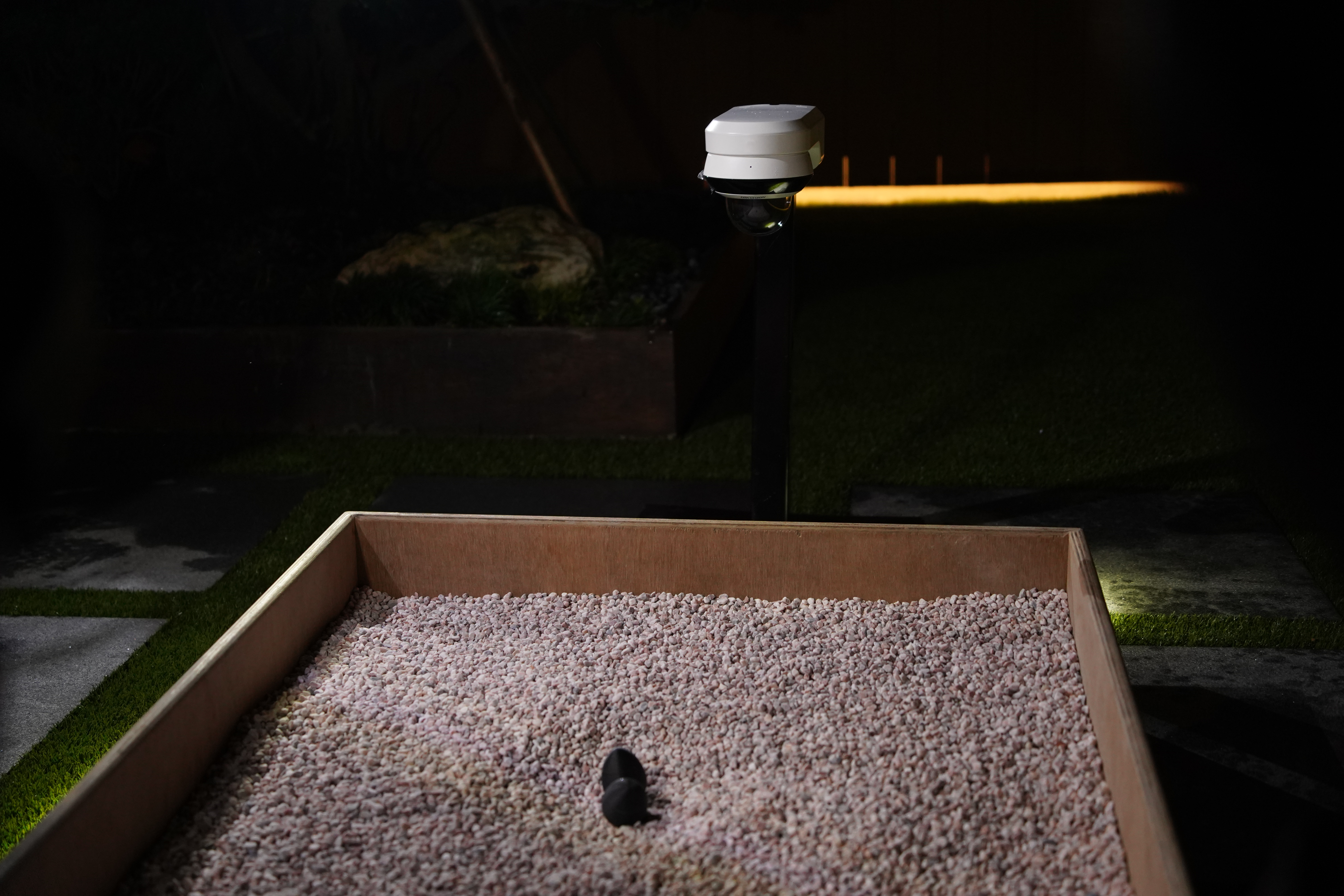 Photo from NParks
Photo from NParks
These were set up in the recess on Nov. 22 by workers who had to scale a scaffold.
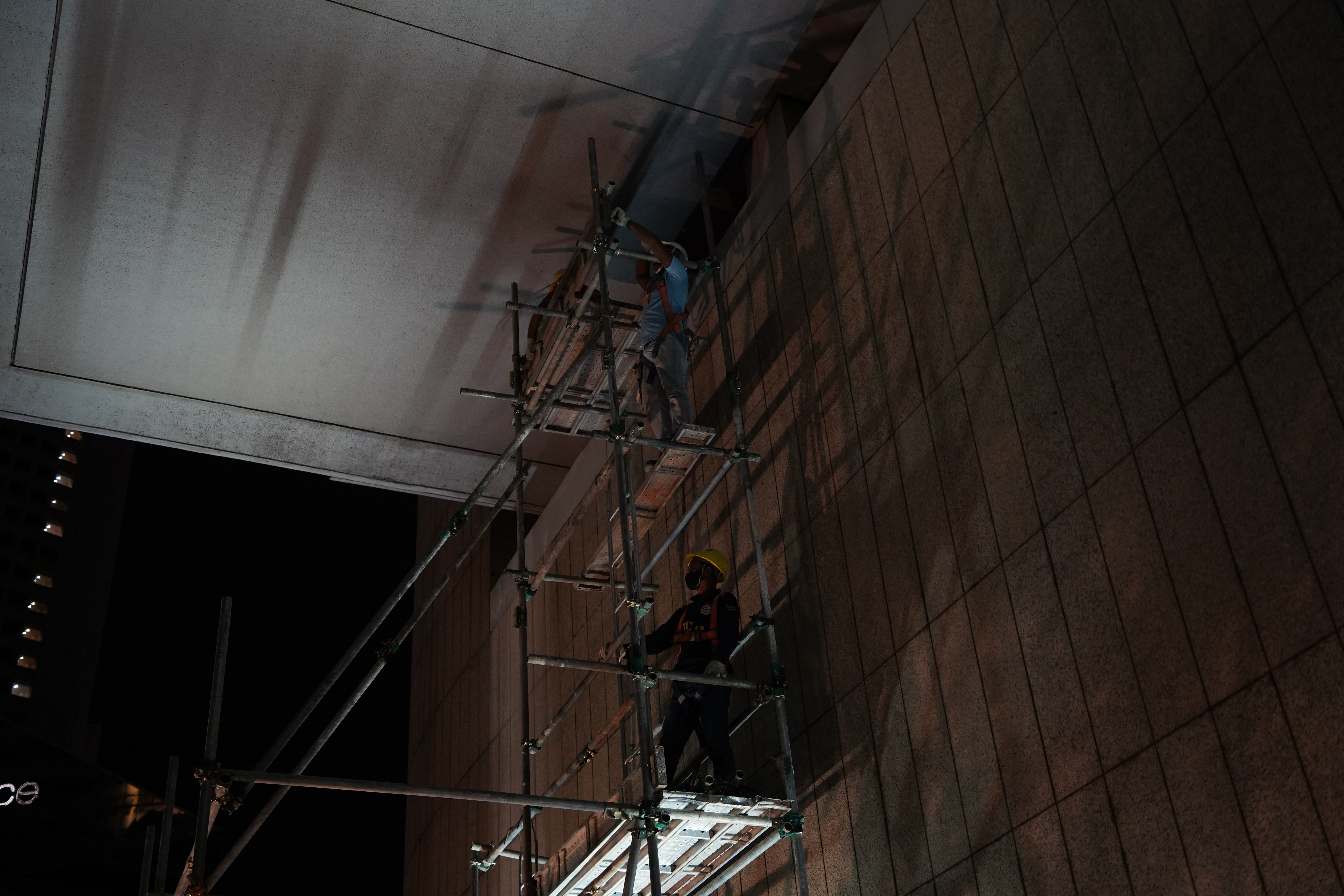 Photo from NParks
Photo from NParks
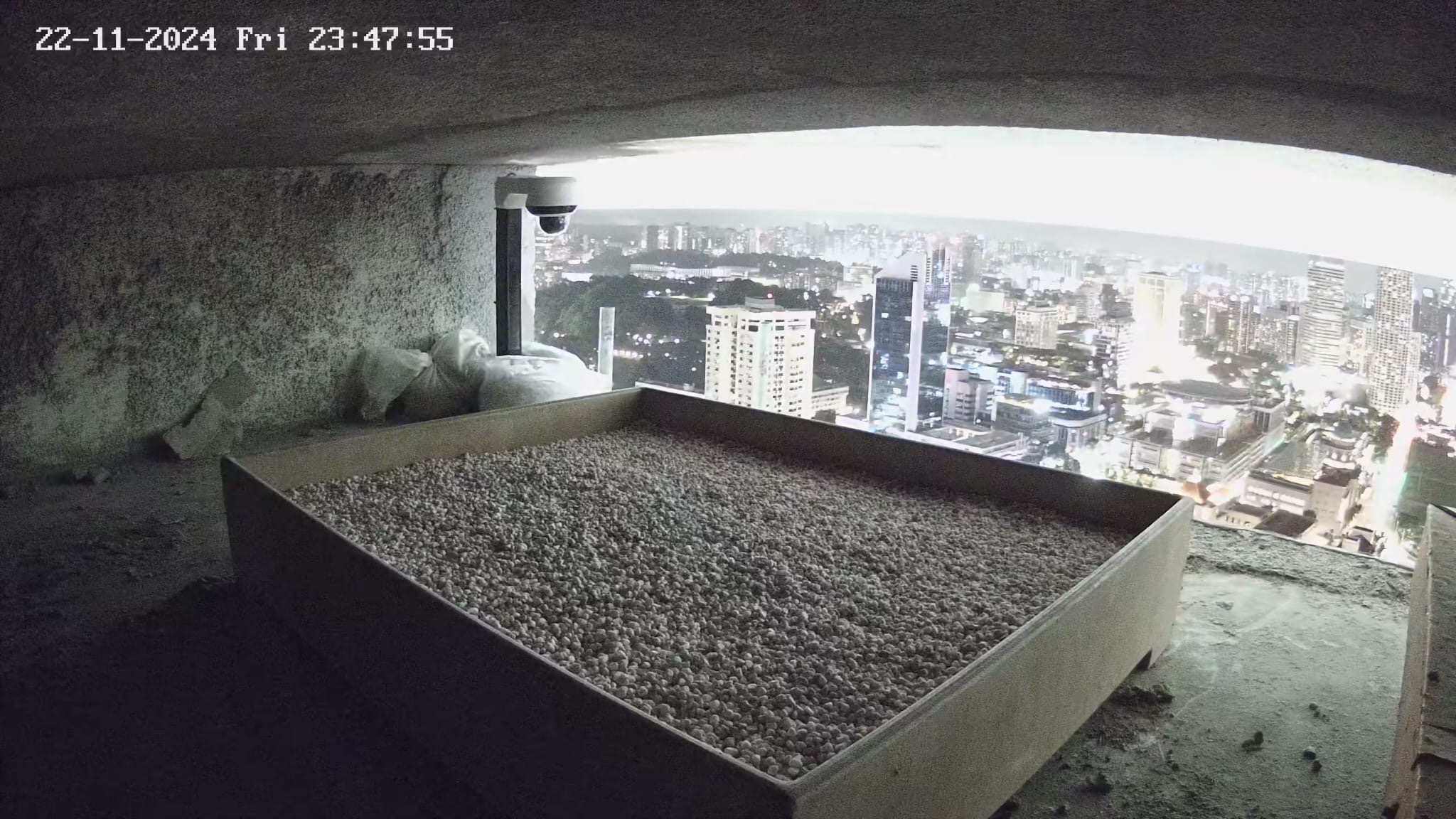 Photo from NParks
Photo from NParks
OCBC is also donating S$10,000 to support the installation of the nesting tray and CCTV system, which will monitor the falcons' breeding cycle.
Koh Ching Ching, OCBC's head of group brand and communications, said:
"It is an unusual instance for wildlife to set up homes within the central business district. We are embracing the wonders of this surprise right outside our office windows. Given our longstanding relationship with NParks, we are happy to play a small part in their quest to learn more about this rare breed of peregrine falcon. It is sometimes said that when a bird chooses to nest at your home, it can bring good luck to the owner.”
Hopefully, falcon babies soon
The nesting period for peregrine falcons is expected to be between January and early February 2025.
If nesting is successful, the eggs are expected to hatch in March 2025, with chicks fledging in April 2025.
"The research team will continue to monitor the nest site for subsequent breeding cycles and maintain the nest if needed, such as removing debris and replacing the nesting tray substrate," Soh said.
Not only will this help to "provide deeper insight into the breeding biology and foraging preferences" of the species, it can help inform conservation strategies to support the falcons' existence in urban Singapore.
Top photo from Max Khoo and NParks
MORE STORIES










